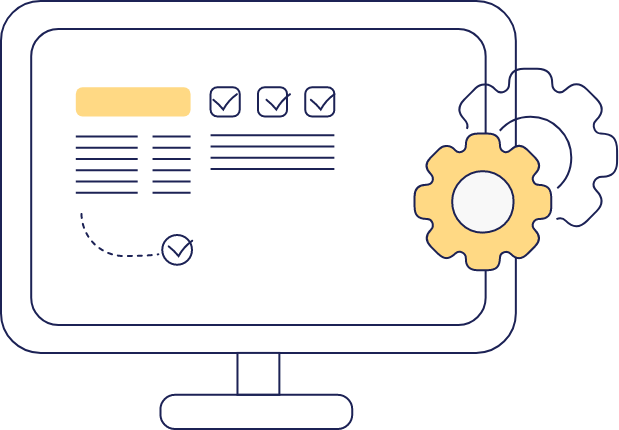Research
Gain insights from the literature on the efficacy, usability, and cost savings associated with OMS and VR simulation.
OMS-focused research

Learn about the independent research on OMS by our clients and partners.
OMS has equal efficacy to mannikin-based simulation
This study in medical residents across multiple disciplines: internal medicine, emergency medicine, family medicine and pediatrics - found no significant differences in technical skills, non-technical skills or knowledge retention between manikin-based simulation and OMS.
OMS is easy to use and embed in a curriculum
OMS was rated as easy to navigate, with two-thirds of all learners giving the highest rating of usability (as measured with the SUS). Authors conclude that embedding OMS within a defined curriculum and facilitated debriefing is valuable for student learning and may ultimately affect patient care.
The OMS learning experience is equal or superior to in-person training and mannikin-based simulation
Junior students’ learning experience (as measured with CLECS 2.0 and SET-M) was similar between OMS and face-to-face simulation. Nurse practitioner students’ learning experience was consistently superior in OMS relative to both in-person training and face-to-face simulation.
OMS lead to significant increases in clinical confidence and performance improvement to Kirkpatrick level 3
96% of learners noted that VR scenarios were better for knowledge retention than standard eLearning modules.
OMS scenario are perceived to translate to clinical practice improvment
After using OMS, clinician confidence in managing diabetic emergencies increased significantly. 100% of trainees expecting to use the knowledge gained within 3 months at work. Qualitative responses included "Honestly, this was the single most useful learning experience I've had so far in my training".
OMS allows practice with multiple patients and is preferred by learners over traditional simulation
Five immersive virtual reality (IVR) simulations were developed in conjunction with OMS and successfully integrated into a pre-licensure senior level nursing course following the Healthcare Simulation Standards of Best Practice. The majority of participants preferred IVR learning, while fewer participants favored traditional simulation.
Learners feel more empowered to provide patient care using OMS vs mannikin-based simulation
Learners felt significantly more empowered to make clinical decisions and developed better understanding of medications using OMS vs mannikin-based simulation. They were more confident in their ability to prioritize care and interventions, provide interventions that foster patient safety, and use evidence-based practice to provide care. OMS was highlighted as cost-effective, portable, and adaptable for modern teaching environments.
OMS promotes teamwork, decision-making, and communication skills
OMS was highly rated for realism and engagement by learners. Group sessions promoted teamwork, decision-making, and communication skills, with 100% of students reporting increased confidence in clinical assessments. Lecturers noted ease of use, high student engagement, and the cost-effectiveness of VR for large cohorts.
OMS Return on Investment (ROI)

Learn about the time and cost savings associated with OMS and virtual reality simulation in healthcare education and training.
Use of OMS results in significant time and cost savings vs mannikin-based simulation
“As well as enriching the student experience, the use of OMS provided access for almost double the number of learners in comparison to face to face simulation, realizing a 74% reduction in staffing time and estate costs”.
The return on investment (ROI) of OMS is between 120% and 3,000%
OMS costs were between $2.22 (£1.86) and $14.38 (£12.07) per use, while physical simulation costs vary from $28.38 (£23.83) to $394.95 (£331.48) per use.
VR simulation is a "financially advantageous, resource conscious pedagogical option for nursing education."
VR simulation education requires 22% less time than physical simulation education and is 40% less expensive.
OMS leads to direct savings in equipment costs and staff time in nursing
When using OMS in one nursing class: “Based on a typical practical group size of 18, using OMS equates to an annual saving of $64,000 (£49,928).” OMS cost an estimated $4,400 (£3,424) in staff time, but the same sessions would have cost an estimated $17,000 (£13,323) to deliver with mannikin-based simulation.
VR is significantly less expensive than physical simulation while delivering the same learning and performance outcomes
Cost-utility ratio of virtual simulation in the US was $1.08 compared to mannequin-based at $3.62.
OMS offers significant return on investment even with light usage
Running only two scenarios per year brings an institutional return on investment of 166%. For $399, an institution could run one physical simulation scenario or alternatively buy licenses providing access to 80 virtual reality scenarios.
Additional research
VR simulation vs traditional education
Virtual Reality for Health Professions Education: Systematic Review and Meta-Analysis (Kyaw, 2019)
VR improves healthcare knowledge and skills significantly more than in-person education or e-learning.
The Effectiveness of Virtual Reality Soft Skills Training in the Enterprise (PwC, 2020)
VR learners are 4x more focused than e-learners, 4x faster than traditional learners and 3.75x more emotionally connected than classroom learners.
Clinical Virtual Simulation in Nursing Education: Randomized Controlled Trial (Padilha, 2019)
VR significantly improved nurses’ knowledge over case-based learning, with higher levels of learning satisfaction.
The Role of Extended Reality Technology in Healthcare Education: Towards a Learner-centered Approach (Logeswaran, 2021)
VR has unique attributes that can improve learning outcomes when compared to traditional learning methods.
VR simulation vs screen-based learning
The Effect of Degree of Immersion upon Learning Performance in Virtual Reality Simulations for Medical Education (Gutierrez, 2007)
In healthcare education, VR significantly improves learning compared with screen-based delivery.
Higher Levels of Immersion Improve Procedure Memorization Performance (Bowman, 2009)
VR significantly improves memory performance compared with screen-based learning and transfer to the real world.
"Being there" and Remembering It: Presence Improves Memory Encoding (Makowsi, 2017)
The sense of presence in VR significantly improves memorization vs screen-based learning.